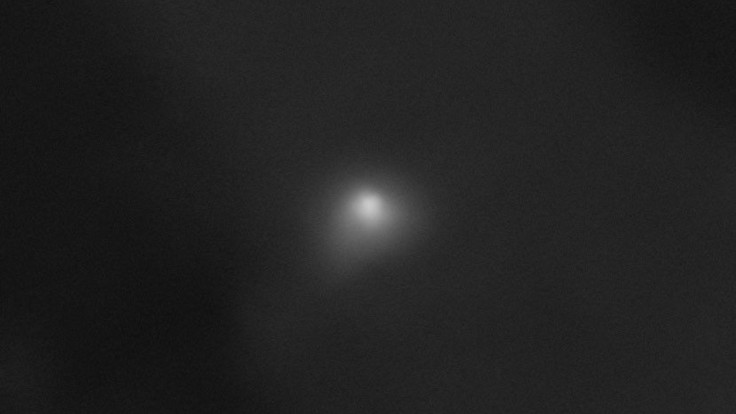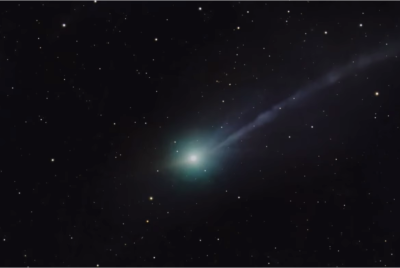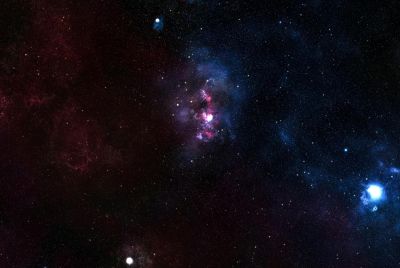Avi Loeb 'Visibly Frustrated' As NASA Ignores 3I/ATLAS Anomalies At Live Event

Harvard astrophysicist Avi Loeb has publicly expressed frustration after NASA officials brushed off his concerns about unexplained features in 3I/ATLAS, the third confirmed interstellar object to visit our Solar System.
The tense exchange unfolded during a live Newsmax appearance, where both sides offered starkly different interpretations of the object's behaviour.
NASA's acting Administrator, Sean Duffy, doubled down on the agency's line: 'It walks like a comet, talks like a comet, struts like a comet. It's a comet.'
Loeb, however, insisted the evidence remains incomplete — and far stranger than NASA is willing to admit.
Loeb Says Science Requires Humility, Not Slogans
The clash centred on what Loeb calls 'significant anomalies'. Speaking on-air, he emphasised that scientific conclusions must rest on data rather than authority:
'The foundation of science is the humility to learn, not the arrogance of expertise.'
Loeb argued that merely invoking 'experts' is not an explanation. Instead, he wants quantitative evidence for NASA's position — and says the current data set shows unresolved contradictions.
One of the biggest questions, in his view, is the report of seven jets emanating from 3I/ATLAS:
- They could be normal cometary vents.
- Or, Loeb argues, they could be thrust-like features.
He claims his calculations show the object lacks enough surface area to sustain the mass flow expected from so many jets if it were a standard comet.
Loeb Presses NASA on Missing Images and Delayed Releases
Loeb also criticised NASA for the slow release of high-resolution data from the HiRISE camera aboard the Mars Reconnaissance Orbiter. The images were captured when 3I/ATLAS passed roughly 19 million miles from Mars, a rare vantage point.
Duffy blamed staffing shortages linked to the US government shutdown.
Loeb dismissed that outright:
'We've had 45 days since the images were taken ... They definitely had plenty of time.'
He argued the issue is larger than one administrator:
'It just shows you how sluggish bureaucracy is. Bureaucracy is taking over science.'
The Anomalies Loeb Says NASA Is Downplaying
Multiple features of 3I/ATLAS continue to raise eyebrows — not only for Loeb, but among a subset of astronomers following the object.
1. Lack of a Tail
Despite signs of strong non-gravitational acceleration, 3I/ATLAS showed no obvious dust tail in early observations — an unusual trait for a comet nearing the Sun.
2. CO₂-Dominated Coma
Infrared data from the James Webb Space Telescope found the object's coma heavily dominated by carbon dioxide, an uncommon profile among typical comets.
3. The 'Anti-Tail'
Loeb and collaborator Eric Keto modelled a structure resembling an anti-tail — a bright extension pointing toward the Sun rather than away from it, contradicting expected behaviour.
These features do not prove the object is artificial, but they also do not fully align with standard comet dynamics.
Critics Push Back
Not all astronomers are persuaded.
On Reddit, some cited commentary from Penn State's Jason Wright, who argued Loeb's calculations are 'demonstrably wrong' and that the broader scientific community has already examined the anomalies and found them unremarkable.
NASA has maintained its position that 3I/ATLAS is simply a highly unusual but natural comet.
A Debate Far From Over
In a separate interview with Cambridge Day, Loeb said scientists have a responsibility to consider low-probability possibilities:
'We have the duty to consider a low-probability event ... because the implications are huge.'
As NASA continues to release data — and Loeb continues to challenge its interpretations — 3I/ATLAS remains one of the most debated interstellar visitors in years.
© Copyright IBTimes 2025. All rights reserved.




















